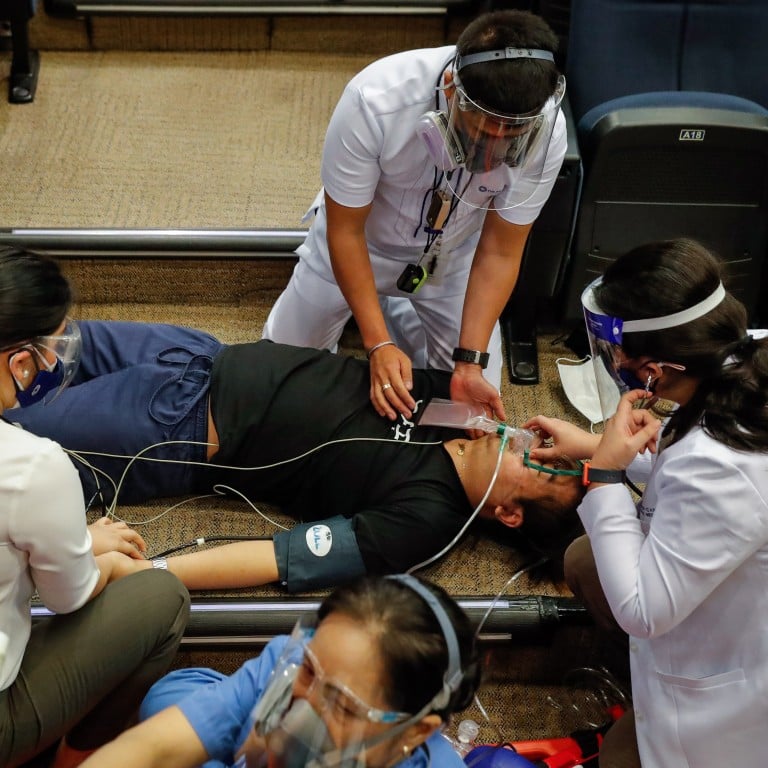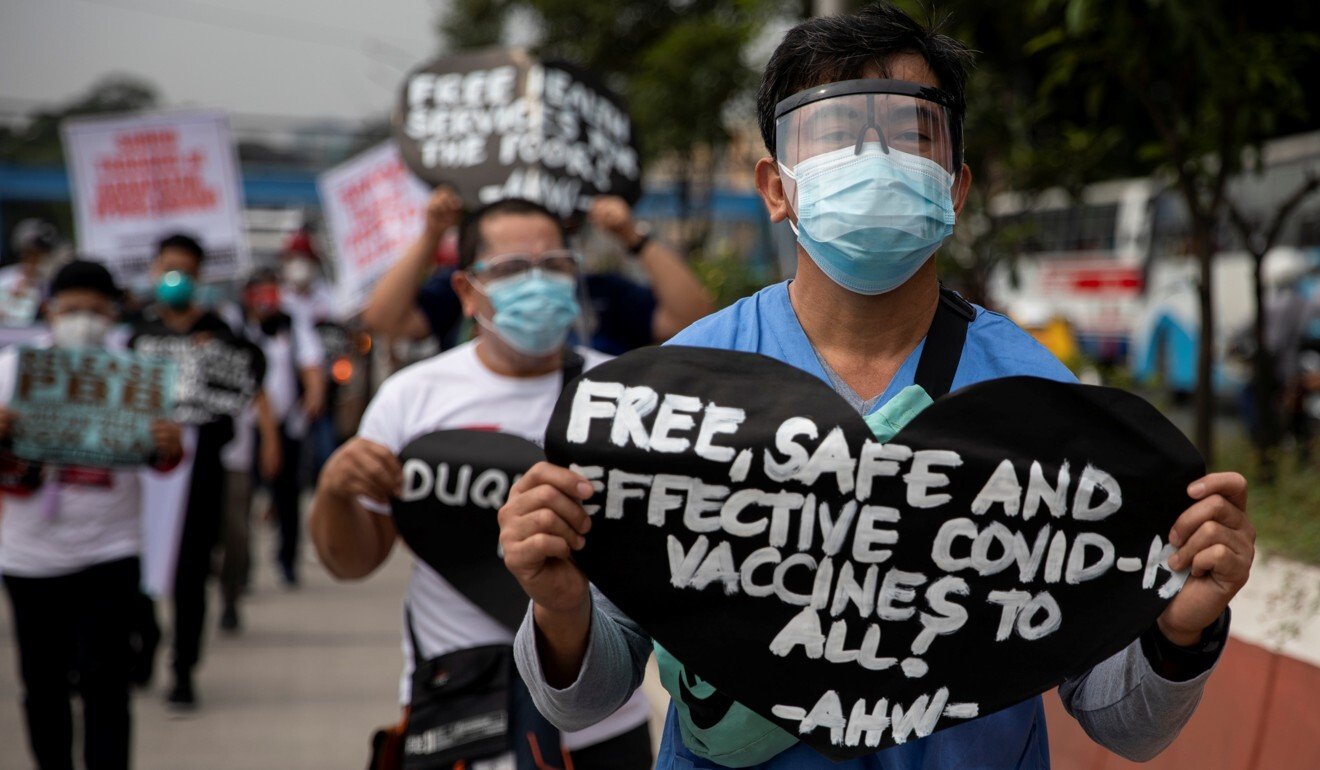
Analysis | ‘Late and slow motion’: where the Philippines’ pandemic response went wrong
- With more than half a million cases and nearing 12,000 deaths, the country’s approach to curbing Covid-19 has been marked by missteps and confusion
- Former officials blame the sluggish roll-out of testing, tracing and quarantine protocols. President Rodrigo Duterte’s lack of leadership hasn’t helped either
Yet his remarks, which struck health experts as dismissive, ended up setting the tone for his administration’s handling of the pandemic. A year later, the Philippines and its population of 108 million are still struggling to cope with a rising infection rate and economic devastation, despite having one of the world’s strictest and longest lockdowns in Metro Manila.

Senators have repeatedly questioned why the government has not been able to clearly state when vaccinations will begin, with local broadcaster News5 TV reporting that during a meeting with his officials on Monday, even Duterte seemed confused about when vaccines would start to arrive in the country.
In an interview with an online news channel on Wednesday, the president’s former socioeconomic planning secretary Ernesto Pernia, who resigned in April, expressed his frustration over how slow the government had been in tackling the pandemic.
“We should have attended to this as early as February like Vietnam. We started in March. I think the discomfort of the people is that we are always late. It’s really slow. Late and slow motion,” he said.
Dr Anthony Leachon, a former senior adviser to Duterte’s Covid-19 task force, said the government took too long to implement travel bans and set up testing, isolation and quarantine facilities. Then, it did not have enough testing kits – with patients dying before they could be tested. There was also only limited contact tracing, he said.
How Duterte’s Philippines struggled against the coronavirus
Leachon, who was fired from the task force last year after he said it was “losing focus”, explained that in fighting the pandemic, the goal of any government was to “flatten the curve” – or slow the rate of infection to prevent the country’s health care system being overwhelmed.
“In order to flatten the curve, you need to set up testing, contract tracing, isolation and quarantine facilities,” he said – something the Philippines took months to implement, only making a real start in August last year.
The country was also lagging in terms of its vaccination programme and had not done much to contain new strains of the disease, Leachon said.
With the country’s official tally of virus cases surpassing 555,000 and deaths numbering 11,673 as of Thursday, government efforts to curb the pandemic continue to be marked by missteps and confusion.

Last year, Duterte set up a national Covid-19 task force under the health secretary, but staffed it with several ex-generals instead of medical experts. He has also taken to appointing “tsars”, usually military officers, to lead parts of the pandemic response.
This week, the government suddenly announced it would reopen cinemas and video arcades to help the country’s economic recovery. Faced with resistance from surprised mayors, who were not consulted about the move, Duterte’s administration doubled down and insisted the reopening would take place on March 1.
But economic analyst turned congressman Joey Salceda cautioned against lifting restrictions too early.
“The most important Covid-19 intervention now is vaccination, especially of our health care workers. This must now be the highest national priority,” he said. “Even if other places of business are reopened, if we are unable to vaccinate our health care workers, we will just have to reimpose restrictions once our facilities get overwhelmed and our frontliners start getting sick again.”
They say they have done the best that they can and I cannot question that … all we have to do is look at the results if you compare them with other countries
When asked to assess the government’s handling of the pandemic so far, former health secretary Dr Esperanza Cabral told This Week in Asia it “could have stood a lot of improvement”.
“While I appreciate that they tried to do their best, I don’t think they came up with the implementation,” she said. “They say they have done the best that they can and I cannot question that … all we have to do is look at the results if you compare them with other countries.”
The Philippines ranked 79th out of 98 countries in a “Covid Performance Index” released by Australia’s Lowy Institute last month, scoring just 30.9 out of a possible 100 points based on the number of cases, deaths and tests.
A survey conducted by the Asean Studies Centre at the ISEAS-Yusof Ishak Institute in Singapore, meanwhile, found that of all Southeast Asian respondents, Filipinos were the most disapproving of their government’s pandemic response, with 53.7 per cent of those asked giving it a thumbs-down.
Philippines Covid-19 enforcement: brutal for the poor, but for the rich?
Not one of the survey’s other Southeast Asian respondents named the Philippines as providing a good example of leadership amid the pandemic.
Duterte himself has hardly been an inspiring leader. Last year, in weekly briefings on the coronavirus, he lashed out at critics – including Leachon – and advised Filipinos to soak their face masks in diesel oil or petrol, as well as promising that a vaccine would arrive by December.
Now, as Leachon warns, the Philippines faces “the largest and most complex” inoculation programme in its history. “We will have to vaccinate at least 75 million people,” he said. “The silver lining is, we have safe and efficacious vaccines coming our way.”

According to Cabral, the government “could have done more in communicating to the people why we are doing the things we are doing, and what we should be doing for ourselves”.
“I’m sure it could have been more efficient,” the former health secretary said of Manila’s pandemic response. “I do not believe this is [the extent to which] we can do things.”


